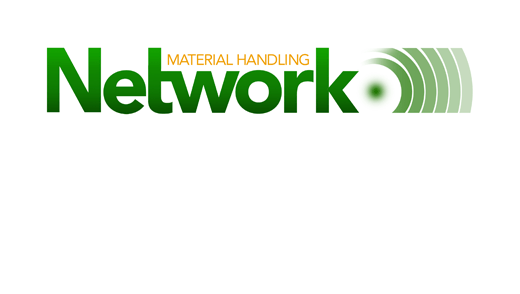Published July 21, 2004
Over the past few years, Supplier Relationship Management (SRM) has gained significant momentum and leverage as a required tool and process in the Supply Chain Execution (SCE) space. However, the deployment of this technology is typically focused on the technology application, which has left the process end virtually unchanged. Yes, SRM does provide visibility to supplier transactions and it does provide tools for automated processes, and it can provide feedback on performance metrics, but it does not manage the automation of performance metric gathering or supplier feedback regarding performance compliance.
Performance metrics is a direct result of a supplier compliance program that is driven by a well-defined plan that is effectively communicated with your suppliers. It is a key area of opportunity for improvement. For example, if you have several suppliers that consistently fail to comply with bar code standards, then your receiving operations will spend a significant amount of time placing the appropriate bar code labels on boxes ultimately costing you time and money. A supplier compliance initiative using performance metrics will help you monitor and manage results at the supplier level and will provide you the details you need for improving the performance of your suppliers and the efficiency of your operations.
A very simple, inexpensive and tactical approach to building a supplier compliance program with performance metrics is through a process that Tompkins International has termed as SMART:
- Specific
- Measurable
- Attainable
- Relevant
- Time-based
The goal of this process is not only to increase your internal operational efficiencies, but to also build stronger relationships with your suppliers through well-defined and communicated expectations.
Specific
The first step to the SMART approach is to identify and document the specific areas of impact to your operations. This will require a detailed process flow of your operation starting with the actual purchase order and ending with the final receipt and any other supplier specific actions that may occur after the receipt such as quality control or cross-dock shipments. Within each process step, evaluate your existing tools, procedural requirements, and the amount of time and effort that it takes your organization to complete that step. For both your organization and the supplier, ask the question, “How can we make this better, faster, quicker, easier, and more effective?”
Following are some examples of process steps and typical questions that should be asked:
Example #1: Your first process step might be the purchase order. If so, are you using a technology-based application that allows for electronic distribution of POs or are you sending faxes or calling in orders via the telephone? Can your supplier(s) receive electronic transmissions? If not, what would it take to enable them? Does it make sense to subsidize the cost and assist your smaller suppliers in the implementation of strategic tools?
Example #2: The second step might be the supplier’s confirmation of the PO and shipment. Do you have the capability to receive electronic Advanced Shipment Notices (ASNs)? If so, how many suppliers are sending you electronic ASNs? If you have a large number of suppliers that do not have the capability to send you an ASN, how much is it costing you to work with them and are there any alternative solutions?
Example #3: Another area to examine could be receiving. Do you require delivery appointment scheduling? If so, how many suppliers or transportation companies are complying with your requirements? What do you do if they do not comply, and what is the overall cost to your operation?
Example #4: You might have bar coding requirements. If so, is there a particular placement on the carton that is required? What is the quality of the bar code and read rate/accuracy from suppliers? Do you require pallet identification?
Use your completed detailed process flow and questions as a baseline for developing a specific list of performance metrics that you can deploy both internally and externally and then follow the guidelines below to validate the feasibility and necessity of each item.
Measurable
Performance metrics are typically recorded and shared with your suppliers in a quarterly report card. In order to provide a supplier with a performance report, each performance metric must be measured towards compliance. A scorecard is a great way to keep up with the performance metrics and measurement criteria. The scorecard should list each specific task and a grade range that typically runs from one to five, with one being the highest (best) and five being the lowest (worst).
After each supplier receipt, the receiving department should use the scorecard to complete a quick scoring exercise. Using bar codes as an example, if all of the inbound cartons are labeled correctly, then the obvious score for that supplier on that task is a one. However, if the read rate/accuracy is troublesome, then the grade would be lower and a discretionary measurement will have to be made to determine the grade. Bear in mind, that without this measurement process on the floor, this issue may have never been reported and could be costing you thousands of dollars in time and materials to reprint and reapply labels. As a result of measurement, you now have a mechanism that will provide management with a real time tool that enables them to validate the savings of this compliance program and will provide them with the data they need to work with your suppliers to improve this process.
Attainable
Much like goals, you should not create unreasonable expectations or performance metrics. Be realistic in your objectives and build a program that will provide real value to your organization. For example, if you have thousands of suppliers, then it may not make sense to have a reporting process for each one. Also, you may have some small suppliers who cannot afford to implement a computer or bar coding system, or you may have suppliers that you only receive small quantities from on a seasonal basis and it may not make sense to enforce this process on them. So, select a manageable number of key strategic suppliers, those that have the most impact on your operation, and work from there.
Relevant
The relevance of this exercise is simple. Will the results provide you with recognizable value? Build a Return on Investment (ROI) equation using the steps identified in the process flow by evaluating the current cost of each step in terms of labor and related expenses and comparing it against the projected savings of the alternative solution. For example, if you are currently manually transmitting POs via fax or the phone, how much time does it take and what is the cost of materials and communications versus the cost of implementing a solution that will automate the process? And, what are the projected savings? If the ROI is less than two years, the alternative solution is relevant and should be implemented immediately.
Time-based
An important aspect of a supplier compliance program is certification. Your scorecard should be used not only as a measurement tool, but also as a method for certifying your suppliers. Typically, your suppliers should be averaging a grade of at least three or higher (one is excellent, three is average and five is grounds for dismissal).
All suppliers who sustain a grade of one or two for a specified period of time should be considered certified and can be removed from the scoring process. There is no need for you to spend time and effort monitoring the performance of a superior supplier. Your focus should be on finding those suppliers that are causing you grief.
Conversely, those suppliers that are at a level of three, four or five should be given a grace period for improvement on specific tasks. At the end of the grace period, if there has been no improvement, then you have to make a business decision as to whether or not you can afford to continue to do business with that supplier.
The chart below can be used as guideline for working with time-based results:
| Grade | Certified | Comments |
| 1 | Yes | Top supplier, certified, long-term business partner |
| 2 | Yes | Top supplier, certified, just a minor issue needs to be resolved, long-term business partner |
| 3 | No | Valued supplier, average performance, needs to correct some noted issues, needs to have them corrected this quarter, has the potential to be a long-term business partner |
| 4 | No | Below average, needs to correct issues immediately or they will no longer be a supplier, on the short list |
| 5 | No | Serious issues, should not be a supplier |
Staying SMART
Use the SMART plan as a guideline for building your supplier compliance program. Communicate your plan with your suppliers and work with them on the compliance and performance metric criteria. Develop a realistic, measurable scoring mechanism that can be transferred into a quarterly report card that you can share with your vendors and promote the benefits of certification. Likewise, have them provide you with feedback on your organizational performance as you work towards a true win-win relationship.
Performance metrics gathering, assimilation, and management will improve your operational efficiencies, but it requires long-term commitment and consistency in data gathering, reporting and communications with your suppliers. Until you communicate and enforce your plan, you will never realize the maximum results of an SRM initiative.



